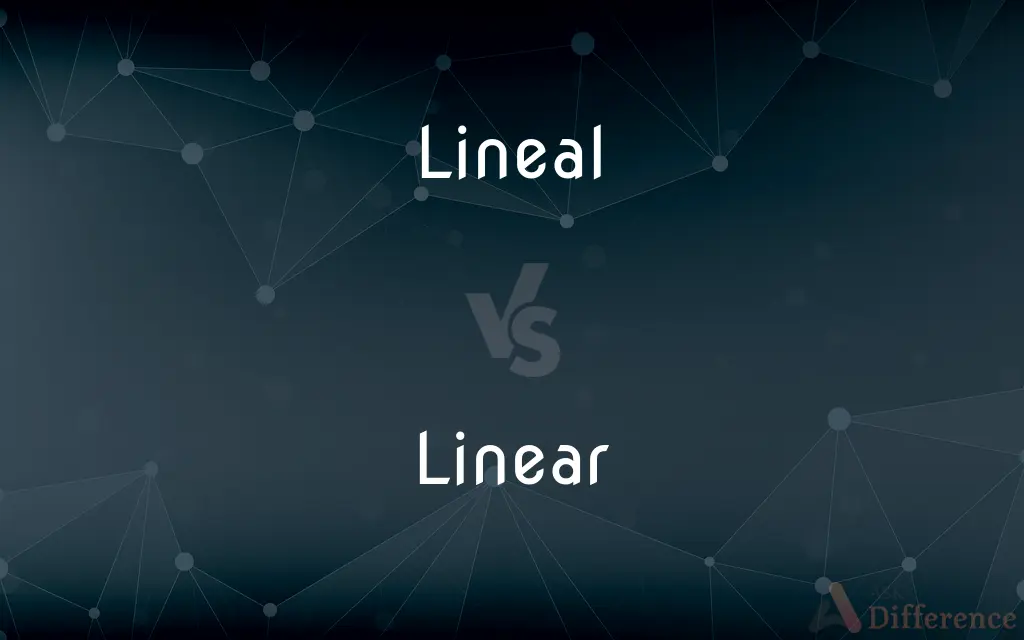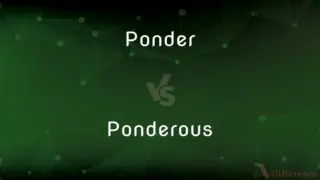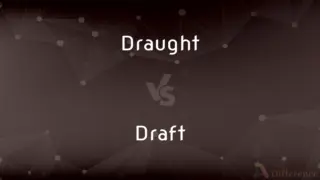Lineal vs. Linear — What's the Difference?
By Fiza Rafique & Urooj Arif — Updated on February 23, 2024
Lineal relates to direct family descent, emphasizing connections, while linear pertains to lines, featuring characteristics like straightness or sequence in mathematics and design.

Difference Between Lineal and Linear
Table of Contents
ADVERTISEMENT
Key Differences
Lineal is primarily used in contexts relating to ancestry and succession within a family, focusing on the direct line of descent from an ancestor. It emphasizes relationships like parent to child, highlighting a genealogical succession. For example, a lineal descendant is directly descended from a specific ancestor.
Linear refers to anything related to or resembling a line. In geometry, it describes shapes or figures that are straight and not curved. In broader contexts, it can refer to progression or development that follows a straightforward, sequential path, such as a linear narrative in a story or linear growth in economics.
Lineal is used to describe relationships in a familial or genealogical context, implying a connection through generations, linear is used in mathematical, physical, and abstract contexts to describe form, function, or progression that follows a straight line or sequence.
The distinction between lineal and linear highlights their different realms of application: lineal is about lineage and heritage, emphasizing a connection through time and generations, whereas linear is about form, direction, and sequence, emphasizing straightness or sequential order.
When someone refers to their lineal ancestors, they are talking about the direct line of their family tree. In contrast, when discussing a linear equation in mathematics, the focus is on a relationship that graphically represents a straight line.
ADVERTISEMENT
Comparison Chart
Definition
Relating to direct family descent
Pertaining to lines, straightness, or sequence
Context
Genealogy, ancestry
Mathematics, design, progression
Key Focus
Line connections, familial lineage
Straight lines, sequential order
Examples
Lineal heir, lineal descent
Linear equation, linear design
Usage
Describes familial relationships
Describes form, function, progression
Compare with Definitions
Lineal
Involving direct inheritance.
He is the lineal heir to the estate.
Linear
Characterized by direct progression.
The game's linear narrative guides players through the story.
Lineal
Focused on direct familial lineage.
Lineal succession often determines monarchy inheritance.
Linear
Related to, consisting of, or resembling a line.
The artist used linear shapes in her abstract composition.
Lineal
Inheriting by direct descent; having the right by direct descent to succeed (to).
Linear
In mathematics, describing an equation involving no powers higher than the first.
Linear equations are foundational in algebra.
Lineal
Descending in a direct line from an ancestor; hereditary; derived from ancestors; - opposed to collateral; as, a lineal descent or a lineal descendant.
The prime and ancient right of lineal succession.
Linear
Involving a sequence that follows a straight course.
The novel's plot is linear, with no flashbacks.
Lineal
Relating to a direct line of descent.
She is the lineal descendant of the dynasty's founder.
Linear
Of or relating to lines.
Lineal
Pertaining to ancestry or pedigree.
The lineal genealogy was traced back ten generations.
Linear
Arranged in or extending along a straight or nearly straight line
Linear movement
Lineal
In a direct line of descent or ancestry
A lineal descendant
Linear
Of, relating to, or resembling a line; straight.
Lineal
Belonging to or being in the direct line of descent from an ancestor.
Linear
In, of, describing, described by, or related to a straight line.
Lineal
Derived from or relating to a particular line of descent; hereditary.
Linear
Having only one dimension.
Lineal
Having an ancestral relationship to mothers, fathers, grandparents, (etc.) and having a descendant relationship to sons, daughters, grandchildren (etc.), exclusive of collateral siblings.
Linear
Characterized by, composed of, or emphasizing drawn lines rather than painterly effects.
Lineal
In a straight unbroken line of descent from parent to child;
Lineal ancestors
Lineal heirs
A direct descendant of the king
Direct heredity
Linear
Having the form of a line; straight or roughly straight; following a direct course.
Lineal
Regarding a straight family line.
The lineal history of the family is well documented.
Linear
Of or pertaining to a line; consisting of lines; in a straight direction; lineal.
Linear
Like a line; narrow; of the same breadth throughout, except at the extremities; as, a linear leaf.
Linear
Of or in or along or relating to a line; involving a single dimension;
A linear foot
Linear
Pertaining to linear progression.
The company experienced linear growth over the past decade.
Common Curiosities
Can a story be both lineal and linear?
A story can be linear in its plot structure but not lineal, as lineal specifically pertains to family descent.
What does lineal mean?
Lineal refers to direct familial descent or lineage, emphasizing a straight line of ancestry.
What is the definition of linear?
Linear relates to lines, featuring characteristics like straightness, sequence, or direct progression.
Can a family tree be described as linear?
A family tree is not typically described as linear because it branches out, whereas linear implies a straight or direct course.
Is linear always related to mathematics?
No, linear can also describe physical forms, design principles, and sequential progression in various contexts.
How is lineal descent traced?
Lineal descent is traced through direct ancestry, focusing on the parent-child relationship across generations.
How is lineal succession different from linear progression?
Lineal succession refers to the direct inheritance within a family, while linear progression refers to straightforward, sequential development.
How does linear design impact architecture?
Linear design in architecture emphasizes clean, straight lines, creating a sense of simplicity and order.
How do lineal and linear concepts intersect in genealogical research?
In genealogical research, lineal concepts focus on tracing direct ancestral lines, while linear concepts may describe the chronological sequence of events or generations within those lines.
What makes a lineal heir?
A lineal heir is directly descended from an ancestor, typically involved in legal contexts of inheritance.
What is a linear equation?
A linear equation is a mathematical statement in which two expressions are set equal, involving no powers higher than the first.
What is the significance of linear progression in storytelling?
Linear progression in storytelling refers to a narrative that unfolds in a straightforward, chronological sequence, enhancing clarity and coherence.
What role does linear thinking play in problem-solving?
Linear thinking involves approaching problems in a step-by-step, logical manner, facilitating straightforward solutions.
Can lineal references appear in legal documents?
Yes, lineal references are often found in legal documents regarding inheritance, succession, and family law.
Is there a linear relationship in physics?
Yes, in physics, a linear relationship describes a direct proportional relationship between two variables, often represented graphically as a straight line.
Share Your Discovery

Previous Comparison
Ponder vs. Ponderous
Next Comparison
Draught vs. DraftAuthor Spotlight
Written by
Fiza RafiqueFiza Rafique is a skilled content writer at AskDifference.com, where she meticulously refines and enhances written pieces. Drawing from her vast editorial expertise, Fiza ensures clarity, accuracy, and precision in every article. Passionate about language, she continually seeks to elevate the quality of content for readers worldwide.
Co-written by
Urooj ArifUrooj is a skilled content writer at Ask Difference, known for her exceptional ability to simplify complex topics into engaging and informative content. With a passion for research and a flair for clear, concise writing, she consistently delivers articles that resonate with our diverse audience.
















































